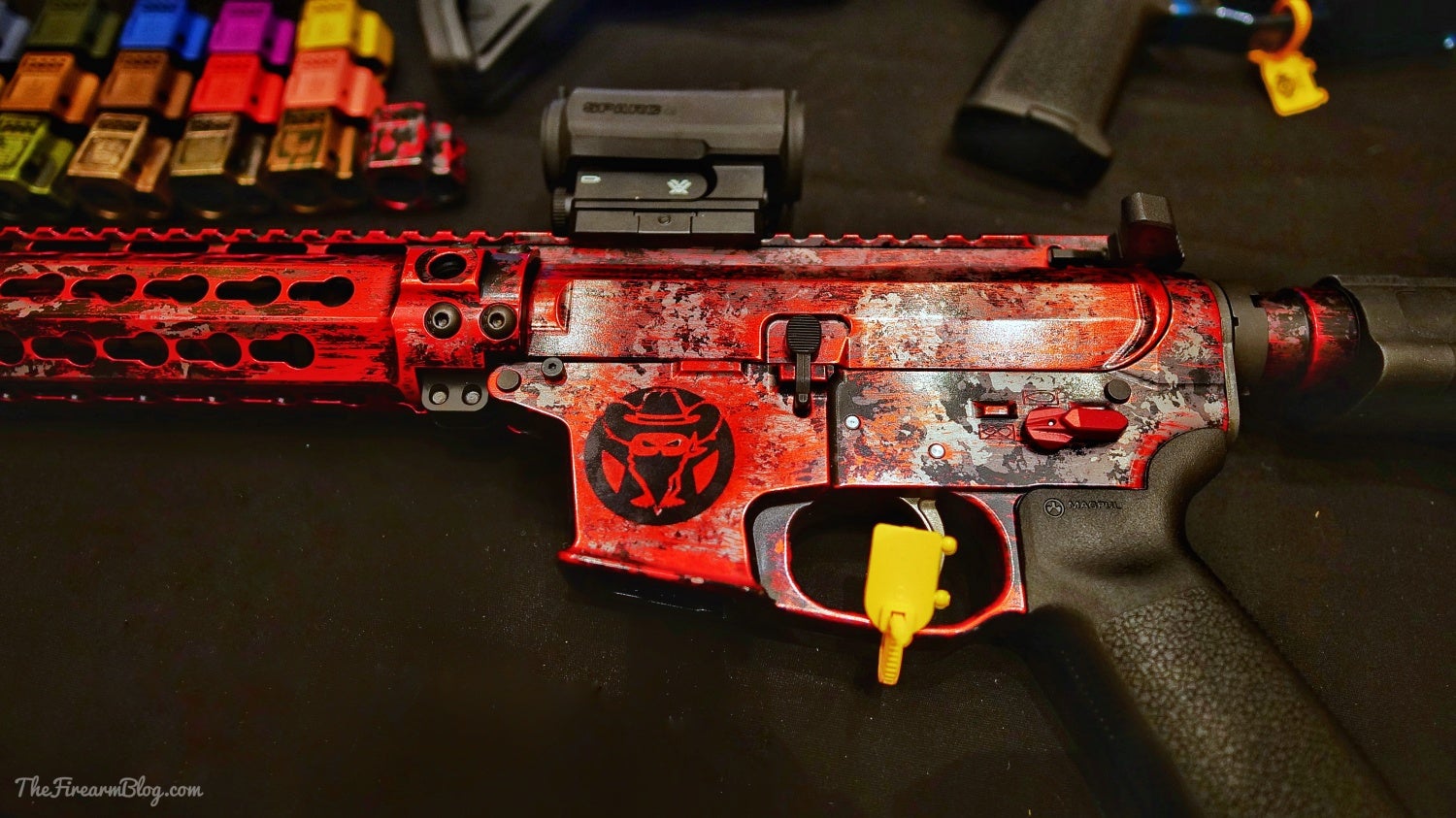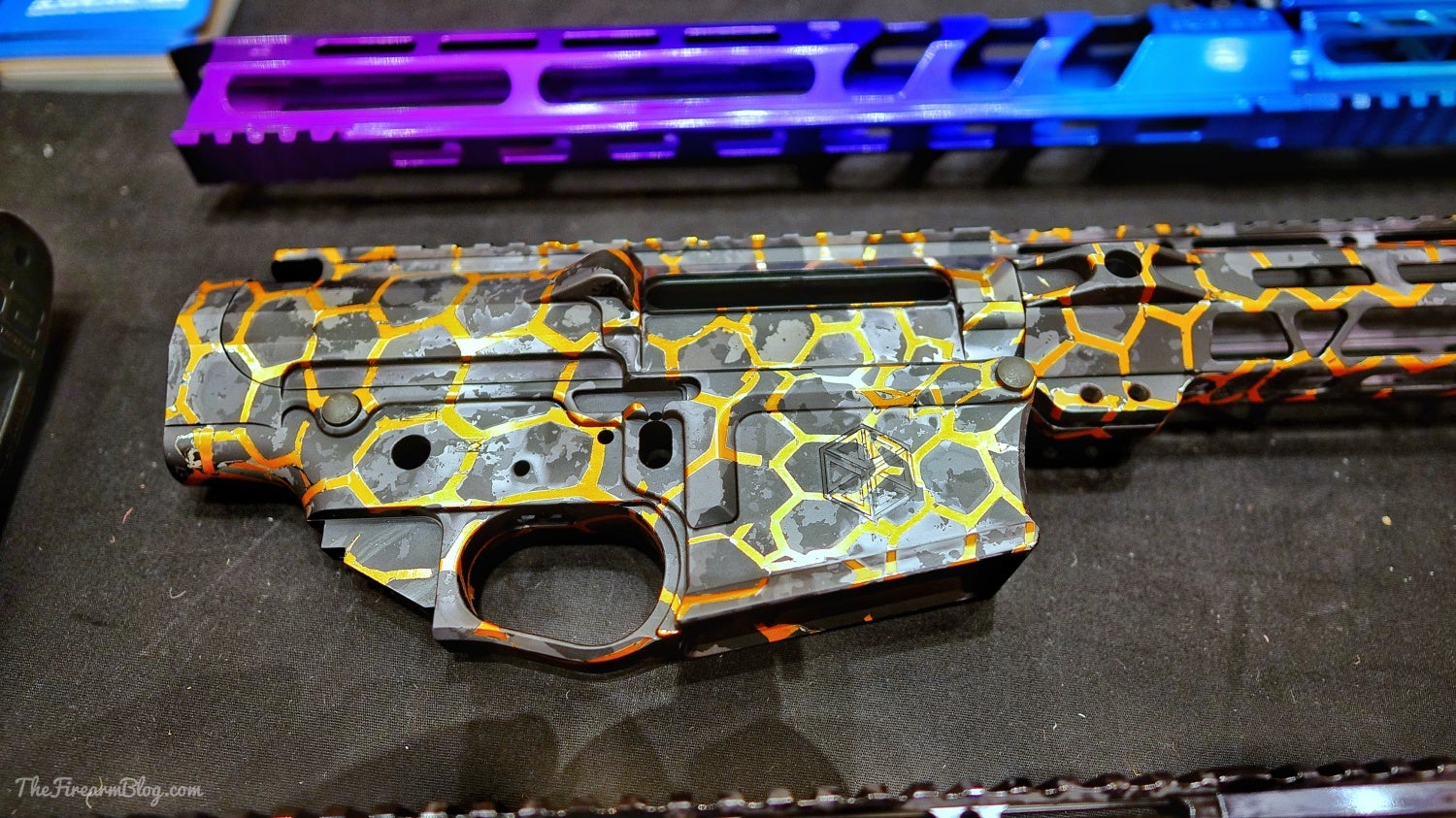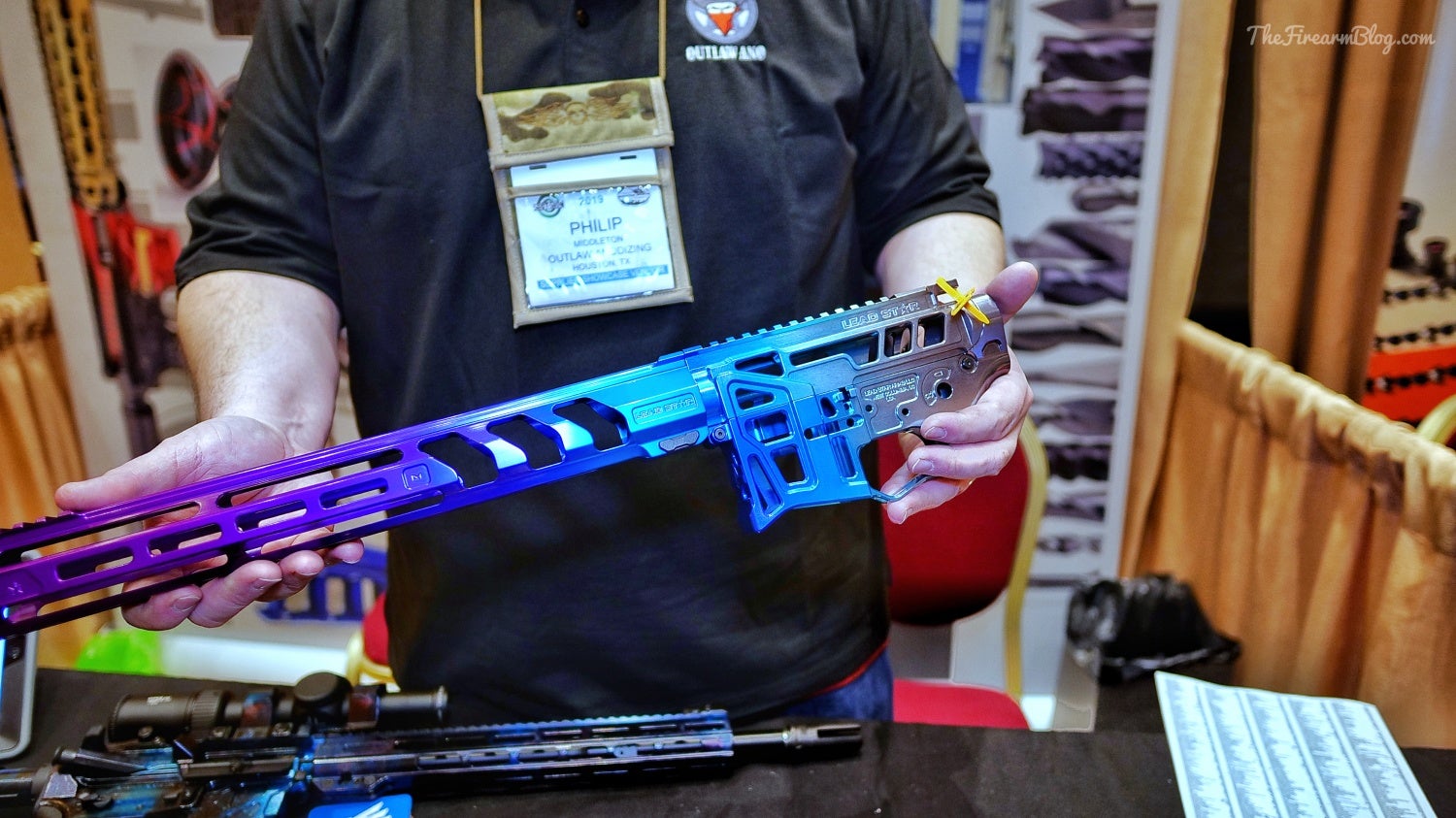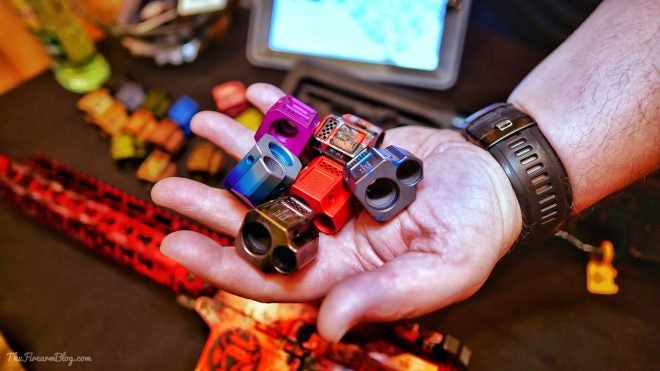A few months back I started planning a custom finish for my Sig Sauer Rattler PDW. Having my fair share of Cerakote coated guns, I wanted to try something new; eventually stumbling across a treatment called Tanodizing. The process involves Type II anodizing – a room temperature charged solution that can include a number of different colored dyes, including Tan or FDE (hence tanodizing). Asking around the industry, Outlaw Anodizing in Houston, Texas, came highly recommended from more than one industry professional.
Luckily for us, Outlaw Anodizing was set up in the Suppliers Showcase on the fifth floor of this year’s SHOT Show and I was able to stop in for an education in refinishing. I may be the last gun guy to know and understand this, but anodizing can only be performed on Aluminum. The porous metal is treated, not coated, where the substrate (and dyes) are absorbed by the metal. Any added thicknesses are well within manufacturing tolerances for parts assembly. There are also two types of anodizing: Type II and Type III Hard Coat are both explained in detail in the paragraphs below.
From our conversations, Outlaw Anodizing has created a type of hybrid between Type II and Type III, allowing for the use of dyes while also preserving hardness. Parts can take anywhere between two to sixteen hours to treat, depending on patterns, the number of colors used and preparation.
As soon as I can decide that I can part with the Rattler for a week or so, I’ll get it shipped off for “Tanodizing” and report back with a process review and pictures. Contact Outlaw here.
[SHOT 2019] Colorful Creativity From Outlaw Anodizing
Type II Anodizing
Type II can be done at room temperature (20 °C 68 °F) with sulfuric acid at 10-20 volts. Depending the specific type aluminum being coated and the time it is processed determines the thickness. This can produce an anodizing thickness from about .0001″ to .0008″ thickness, where the natural oxide layers are generally 2 to 3 nanometers thick. Although its original finish is “white” that can be problematic due to the highly porous surface of type II, this gives it the capability of being able to be dyed virtually any color desired. These coatings can be dyed in a wide spectrum of colors. Typically, these are organic dyes that easily absorbed by the oxide layer. Then it undergoes a sealant process locking in the desired dye of choice.
Type III Hard Anodizing
The temperature of the sulfuric acid must be reduced to 0 °C / 32 °F. This allows the anodizing to build to a heavier thickness (MIL-Standard). The anodizing voltage is also increased to 50-90 volts (depending on the type of aluminum being used) this is a very hard and highly wear-resistant coating. It is possible to achieve a .002″ thickness with a 50% Penetration and 50% Buildup on the surface. This is called “hard coat” or “hard anodizing”. Type III is primarily used on items such as machine parts, automobile components, down hole tools, and firearms. Due to the thickness of type III most hard coat coatings finish with a gray to charcoal color. Hard coated parts are rarely dyed bright colors, because the colors typically take unevenly. They can however be dyed dark tones when necessary and black mainly



Outlaw Anodizing is a high quality, high volume anodizing company located in Houston, Texas. We provide Type II sulfuric acid and Type III hard coat anodizing to our customers all over the United States. We are fully equipped to handle any steps in the process from start to finish including blasting of any quantity of parts with some of the fastest turnaround times in the market. We service a wide base of customers from the military, aerospace, automotive, and oil/gas industries. Give us a call, let us help you with your next anodizing project.
 Your Privacy Choices
Your Privacy Choices
